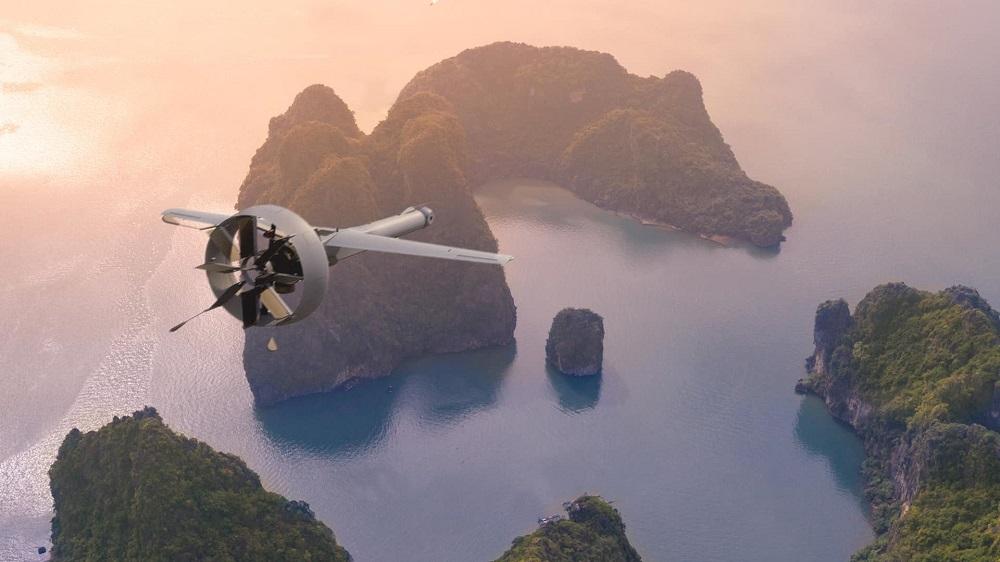Shield AI, a fast-growing defense technology company building AI pilots for aircraft, announced its inclusion in the first set of projects selected to receive funding for the Office of the Under Secretary of Defense for Research and Engineering’s (OUSD(R&E)) pilot program to Accelerate the Procurement and Fielding of Innovative Technologies, also known as APFIT. According to the DoD’s official release, the purpose of the APFIT pilot program is to expeditiously transition technologies and get them in the warfighters’ hands. The benefits of this pilot will be to deliver war-winning capabilities to the warfighter. Shield AI’s APFIT project involves the initial procurement of V-BAT unmanned aircraft systems (UASs) — semi-autonomous, long-loiter, vertical takeoff, and landing-capable UASs with modular payload capability — that can provide resilient data transport and locate and provide weapon quality targeting information as part of the Joint Sensing Grid to JADC2.
“This is a win-win. For the warfighter, they will not have to wait the average 4-6 years to receive new tools and products to do their jobs more effectively. For Shield AI and the V-BAT, selection by a joint-strategic office like OUSD R&E alongside its selection for SOCOM and Naval Air Warfare Center Aircraft Division’s Multi-Mission Tactical UAS program last year — in addition to ongoing deployments with Marine Expeditionary Units in support of Force Design 2030 and widespread adoption with international program offices — it’s further proof that our V-BAT is a very special aircraft. Everyone is choosing V-BAT. When a military service buys V-BAT, they are not just getting a winning technology, product, and capability that will radically enable warfighters. They are also getting a team of world-class engineers and professionals committed to making service members proud and a best-in-class aircraft and cutting-edge software, all while helping advance a product roadmap that will transform the battlefield and strengthen global stability and national security,” said Brandon Tseng, Shield AI’s co-founder, President, and former Navy SEAL.

The V-BAT, with its innovative, near-zero footprint vertical take-off and landing (VTOL) and long-endurance capabilities, is unlike any UAS on the market today. Propelled by a single, ducted, thrust-vectored fan, it takes off and lands in the style of a SpaceX rocket. Its fully operational logistical footprint fits into the bed of a pickup truck or inside a Blackhawk helicopter, significantly reducing the total cost of capability. U.S. and international customers view the V-BAT as a flexible, cost-efficient platform capable of performing Group 2 UAS to Group 5 UAS missions and beyond. Shield AI’s Hivemind software is an AI pilot for military and commercial aircraft that enables intelligent teams of aircraft to perform missions ranging from room clearance, to penetrating air defense systems, and dogfighting F-16s. Hivemind employs state-of-the-art algorithms for planning, mapping, and state-estimation to enable aircraft to execute dynamic flight maneuvers and uses reinforcement learning for discovery, learning, and execution of winning tactics and strategies. On aircraft, Hivemind enables full autonomy and is designed to run fully on the edge, disconnected from the cloud, in high threat, GPS and communication-degraded environments.
Shield AI is an artificial intelligence company founded in 2015 with the mission to protect service members and civilians with intelligent systems. As a Navy SEAL, Shield AI co-founder Brandon Tseng experienced firsthand problems where intelligent autonomy could have made life-saving differences. He asked himself what does the military of 2030 look like and what role does autonomy play. The answer – AI pilots powering every military asset: aircraft, drones, ships, satellites and submarines. ?The lack of software and AI engineering talent from large defense primes presented an opportunity to start fresh and build the aerospace and defense technology company of the 21st century focused on AI pilots. And in 2015, alongside cofounders Ryan Tseng, and Andrew Reiter – Shield AI was founded to bring the best of AI and autonomy technology to the U.S. Department of Defense. Backed by top-tier Silicon Valley VC funds, Shield AI has established itself as the leader in AI for aviation. Shield AI has been named to Forbes’ AI 50 and Best Startups lists, CB Insights Top 100 AI Companies, and Fast Company’s Most Innovative Companies. The company has offices and facilities in San Diego, Dallas, Washington, D.C. and Abu Dhabi.













